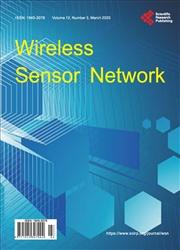Wireless Sensor Networks for Water Quality Monitoring and Control within Lake Victoria Basin: Prototype Development
引用次数: 69
Abstract
The need for effective and efficient monitoring, evaluation and control of water quality in Lake Victoria Basin (LVB) has become more demanding in this era of urbanization, population growth and climate change and variability. Traditional methods that rely on collecting water samples, testing and analyses in water laboratories are not only costly but also lack capability for real-time data capture, analyses and fast dissemination of information to relevant stakeholders for making timely and informed decisions. In this paper, a Water Sensor Network (WSN) system prototype developed for water quality monitoring in LVB is presented. The development was preceded by evaluation of prevailing environment including availability of cellular network coverage at the site of operation. The system consists of an Arduino microcontroller, water quality sensors, and a wireless network connection module. It detects water temperature, dissolved oxygen, pH, and electrical conductivity in real-time and disseminates the information in graphical and tabular formats to relevant stakeholders through a web-based portal and mobile phone platforms. The experimental results show that the system has great prospect and can be used to operate in real world environment for optimum control and protection of water resources by providing key actors with relevant and timely information to facilitate quick action taking.用于维多利亚湖流域水质监测和控制的无线传感器网络:原型开发
在这个城市化、人口增长和气候变化和多变性的时代,对维多利亚湖流域(LVB)水质进行有效和高效的监测、评价和控制的需求变得更加迫切。依赖于在水实验室收集水样、测试和分析的传统方法不仅成本高昂,而且缺乏实时数据捕获、分析和向相关利益攸关方快速传播信息以作出及时和明智决策的能力。本文介绍了一种用于LVB环境下水质监测的水传感器网络(WSN)系统原型。在开发之前,评估了主要环境,包括在操作地点的蜂窝网络覆盖的可用性。该系统由Arduino微控制器、水质传感器和无线网络连接模块组成。它实时检测水温、溶解氧、pH值和电导率,并通过基于web的门户网站和移动电话平台以图形和表格格式向相关利益攸关方传播信息。实验结果表明,该系统具有广阔的应用前景,可用于实际环境中,为关键行为体提供相关、及时的信息,便于快速采取行动,实现水资源的优化控制和保护。
本文章由计算机程序翻译,如有差异,请以英文原文为准。
求助全文
约1分钟内获得全文
求助全文

 求助内容:
求助内容: 应助结果提醒方式:
应助结果提醒方式:


